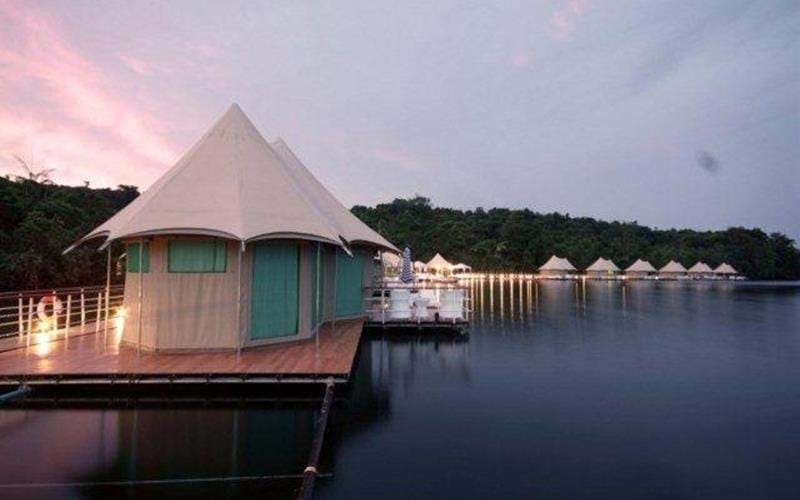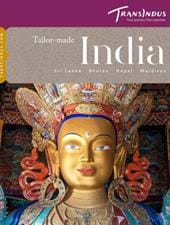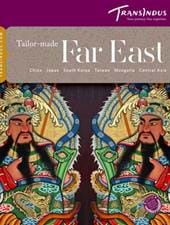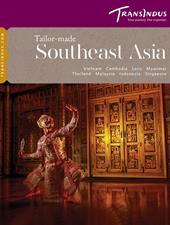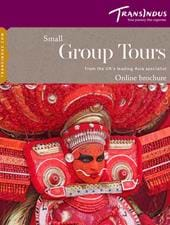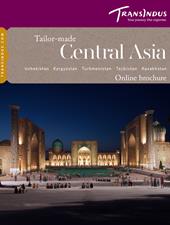Tailor-made Tour 16 days from £4670 per person
Places Visited: ANGKOR, KOH KER, BANTEAY SREI, PREAH VIHEAR, PHNOM PENH, KOH KONG, KEP
LUXURY PRIVATE JOURNEY COVERING THE TOP KHMER TEMPLES AND COAST
As well as the must-see monuments of Angkor, this tour cherry-picks a handful of lesser visited Khmer sites in the north of the country – including the magical clifftop complex of Preah Vihear on the Thai border – before cutting down to the coast via Phnom Penh. The second week offers a mixture of boutique luxury and off-beat explorations of the remote rivers, waterfalls, beaches and mountains in the nature reserves along the south and western seaboard. You get to see all the big hitting sights (guided by experts who know how to sidestep the crowds) and enjoy a quick fix of city life in the capital, but the focus of the trip is mostly on quiet, off-the-beaten-track spots where you’ll gain a vivid experience of Cambodia’s nature, history and rural life.
Accommodation and transport
We’ve selected our absolute favourite properties in the country for this trip, including the legendary Raffles in Phnom Penh and a gorgeous, French-colonial-era Knai Bang Chatt for your 4-night coastal break at the end. All of the resorts and hotels have great character, and are five-star, except the one we use in the far north, which is a pleasant four-star boutique place with a pool. Throughout, the highest standards of comfort possible are maintained, and you’ll be travelling with your own luxury car, driver and guide.
Holiday Types
Cultural Holidays Family Holidays River Cruising Holidays
Suggested itinerary
UK
Deaprt from the UK to Siem Reap, via Bangkok.
Accommodation Options
Siem Reap
On arrival in Siem Reap, you’ll be met at the airport by your TransIndus guide and escorted to your hotel for a three-night stay. Spend the remainder of the day recovering from your journey, perhaps venturing out for late-afternoon or evening stroll around the market.

Over a million visitors each year use Siem Reap as a base for visiting the Angkor temples. The upside of its popularity is a wide choice of quality hotels, restaurants, bars and shopping opportunities. A few pockets of authentic Cambodian atmosphere also survive in the local fresh produce market, and numerous performances of Khmer Apsara dance, music and shadow puppetry are staged in the evenings. Visitors interested in traditional Cambodian arts and crafts may also visit workshops of the renowned ‘Artisans Angkor’ company, which has spearheaded the revival of silk-making, stone and wood carving, lacquering and painting in the area.
Accommodation Options
Siem Reap
A full day’s sightseeing begins with a tuk tuk ride to the ancient walled city of Angkor Thom, followed by a tour of Ta Prohm – the most evocative of all the ruins at Angkor – and Angkor Wat itself in the late afternoon. For sunset, our guides generally recommend the Pre Rup temple.
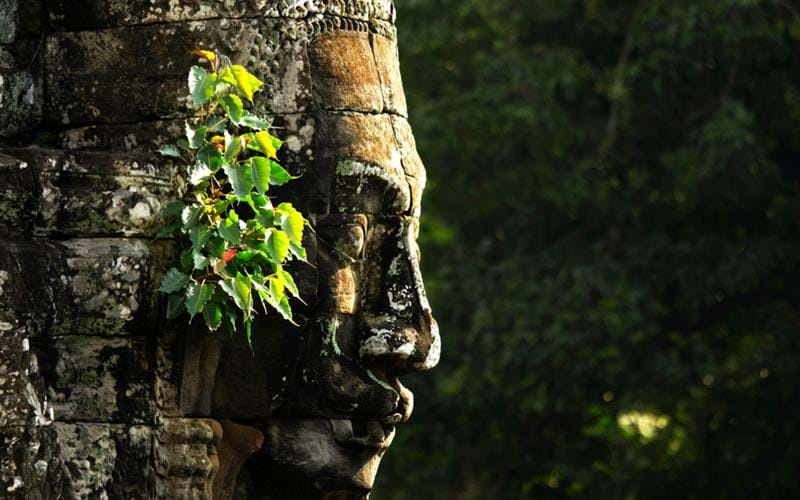
The colossal smiling faces adorning the Bayon, the temple complex at the heart of Angkor Thom, have become emblematic of Khmer civilization. There are 200 of them in total, emerging mysteriously from the sides of 54 towers. This is also where you’ll also find the famous bas relief panels depicting battles with the Cham – some of the finest stone carving to survive from the Khmer era.
Next on your tour is Ta Prohm, a hauntingly beautiful monastic complex dating from the late-12th century, where the roots of giant banyans and strangler figs enfold much of the stonework, creating scenes little changed since the French adventurer Henri Mouhot re-discovered Angkor in the 1850s.
We find it’s always better to explore Angkor Wat in the afternoon when the crowds have thinned. The greatest of all the shrines created by the Khmers, the temple stands as vivid testament to the power, ambition and unbridled narcissism of the region’s ancient rulers. Colonnaded galleries of exquisite stone-carved apsaras (‘celestial dancers’) enfold the corn-cob towers of the shrine, reflected to sublime effect in the lotus-dappled moat.
For the wonderful view it reveals over the surrounding fields, Pre Rup is our preferred spot for sunset. Its name – ‘Turning the Body’ – suggests the temple may originally have served as a royal crematorium.
Accommodation Options
Siem Reap
A visit to a couple of remote temples, two hours’ drive northeast of Angkor, takes up most of today. Return to Siem Reap in the evening.
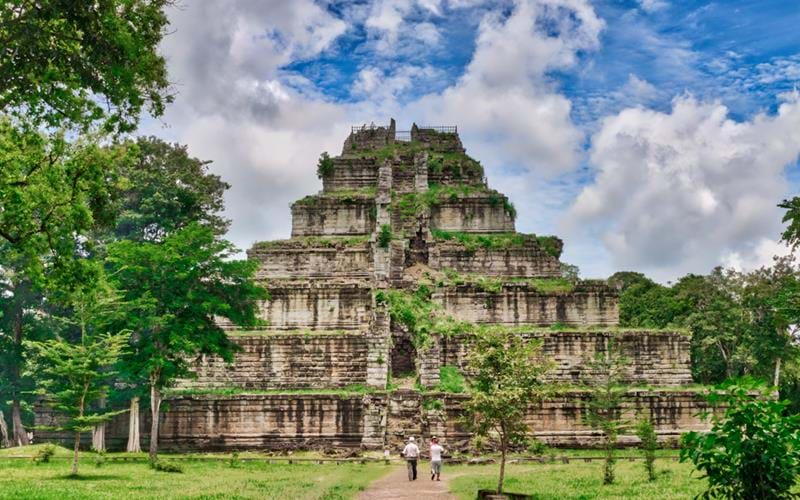
Like a survivor of the Mayan civilization on the Yucatan Peninsula, the giant, seven-tiered pyramid of Koh Ker’s Prasat Thom temple rises in awesome fashion from the surrounding jungle, its platforms draped in weeds and sides streaked by rain wash. A flight of wooden steps leads to the top for a spectacular view over the surrounding countryside.
For the full Indiana Jones experience, the next monument on today’s excursion is hard to beat. Large portions of Beng Mealea’s ruins and underground passages are smothered in jungle, with buttressed-root trees growing from jumbles of carved masonry, moss smothering elaborately sculpted door lintels and the smiles of apsara maidens glimpsed behind curtains of leaves – all poignant, and splendid.
Accommodation Options
Preah Vihear
After breakfast you’ll re-join your driver and guide for the drive north to one of the most spectacularly sited Khmer temples in all of Asia, Preah Vihear, which rests on the rim of precipitous cliff close to the Thai border. A visit to another Khmer ruin, Banteay Srei, breaks the journey. You’ll spend the night at a comfortable hotel 7 miles from Preah Vihear at Sra Em.

Dating from the peak of Khmer power in the 10th century, remote Banteay Srei (‘Citadel of Beauty’) rests at the foot of Kulen Mountain. Its carvings, hewn from pink sandstone, are regarded by scholars as the representing the high watermark of Khmer art. Nearly every surface is finely embellished, but it is the sensuous deity figures in the niches around the sanctuary towers, draped in silk and jewellery, that most vividly conjour up the splendour of Khmer religious and courtly life.
Accommodation Options
Phnom Penh
An early start is recommended for your morning visit to Preah Vihear. After lunch, return to Siem Reap to catch your flight to Phnom Penh, where you’ll spend two nights.
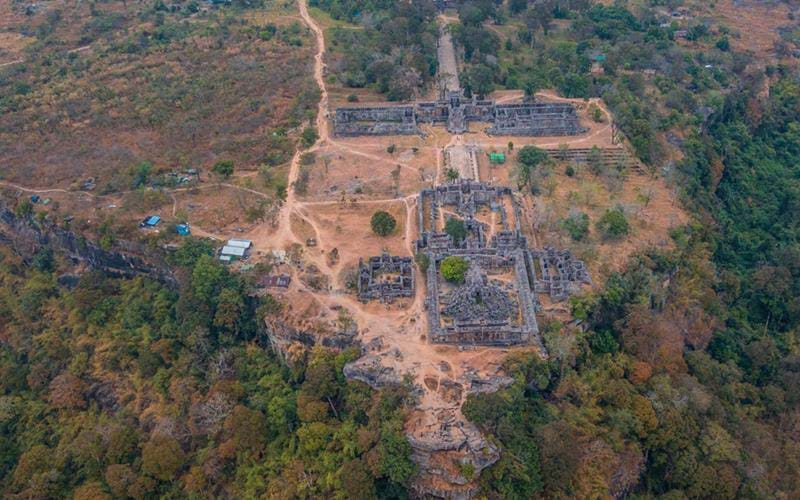
On the border with Thailand, Preah Vihear occupies a natural rock platform beside a dizzying, 525-m (1,722-ft) cliff in the Dangrek Mountains. It’s not hard to see why the Khmers chose this inaccessible site. The view over the Cambodian plains below is magnificent, and must have added an epic feel to rituals conducted in the shrine. The temple is approached via long, stepped causeway, punctuated by five gopura towers which each conceals what lies beyond until you pass through, adding greatly to the sense of expectation as you climb towards the main sanctum, where a solid bold statue of Shiva as Nataraj, the Cosmic Dancer, was once enshrined.
Ownership of the site, which used to straddle the international border, was hotly disputed by Cambodia and Thailand for most the 20th century, and in the late 1990s the complex sheltered one of the last surviving bands of Khmer Rouge fighters. During the civil war it was the scene of terrible tragedy, when thousands of refugees were forced at gun point off the cliff, which they descended by clinging to vines (many with children on their backs), only to encounter a minefield at the bottom.
Accommodation Options
Phnom Penh
Enjoy a tour of the capital’s principal landmarks in the morning, including the Royal Palace, Silver Pagoda, museum and market. In the afternoon, visit the Killing Fields on the outskirts, followed by the Tuol Sleng Museum to learn about the genocide of the Pol Pot era.
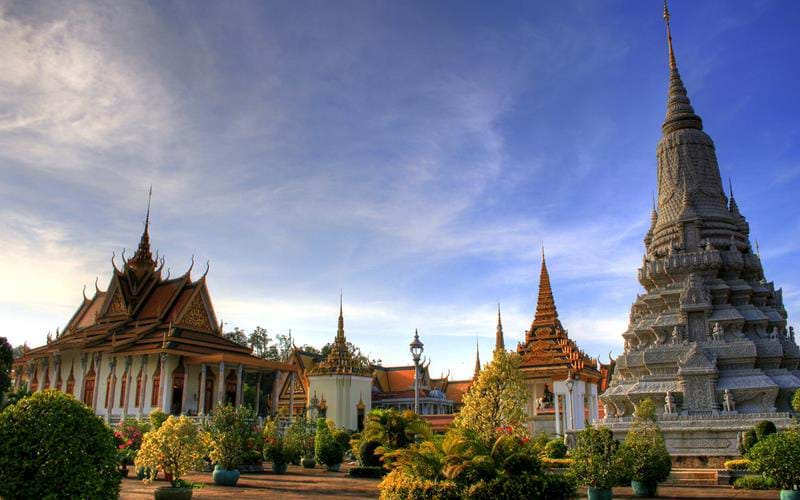
Begin your sightseeing with a visit to the splendid Royal Palace and adjacent Silver Pagoda, whose central shrine holds a Buddha made from an enormous emerald. Then admire the impressive collection of antiquities at the National Museum before a tour of Boeung Keng Kang Market, where you’ll sample local delicacies such as pungent durian and dragon fruit.
Such abundance is a far cry from the Pol Pot era of the mid-1970s, when a school in the centre of Phnom Penh housed the notorious S-21 prison. Now maintained as a memorial to the victims of the Khmer Rouge, the buildings today comprise the Toul Sleng Genocide Museum, where exhibitions of clothing, human remains and photographs document the atrocities perpetrated within its walls – a sobering testament to the horrors of Cambodia’s recent history.
Tens of thousands of the Khmer Rouge’s victims were murdered at a site on the edge of the capital, near the village of Choeung Ek – one of the country’s infamous ‘Killing Fields’. A memorial stands beside the mass graves, where a small museum recalls how between 3 and 300 people were executed here every day.
Accommodation Options
Koh Kong
Drive south from Phnom Penh towards Koh Kong for a four-night stay at the Four Rivers Floating Lodge – springboard for the beautiful Cardamom Mountains, one of the last remaining areas of true wilderness in the country.
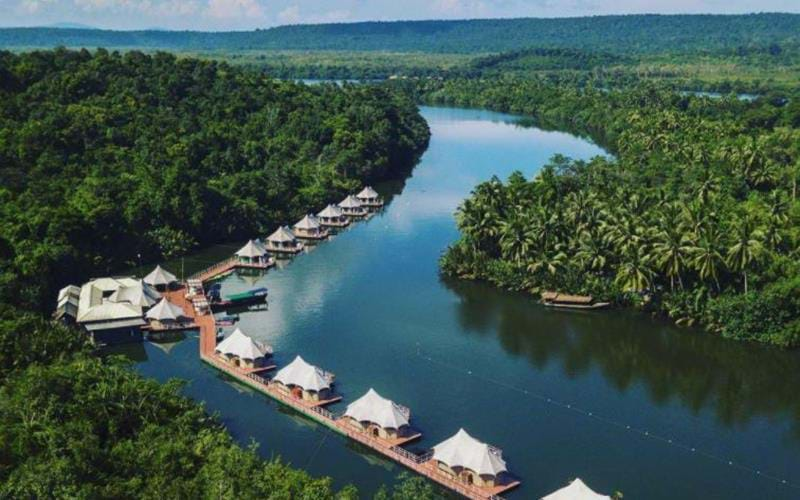
Four Rivers Floating Lodge comprises rows of luxury canvas tents erected on platforms at a picturesque bend in the Tatai River. Surrounded on all sides by greenery, you can savour the sounds and sights of the forest from the privacy of your own private sundeck or wooden Hinoki bathtub. No need for plunge pools: simply climb down the ladder in front of your tent and dive into the glassy water of the river.
Accommodation Options
Koh Kong
Spend the day lazing at the river lodge or exploring the Cardamom Mountains.
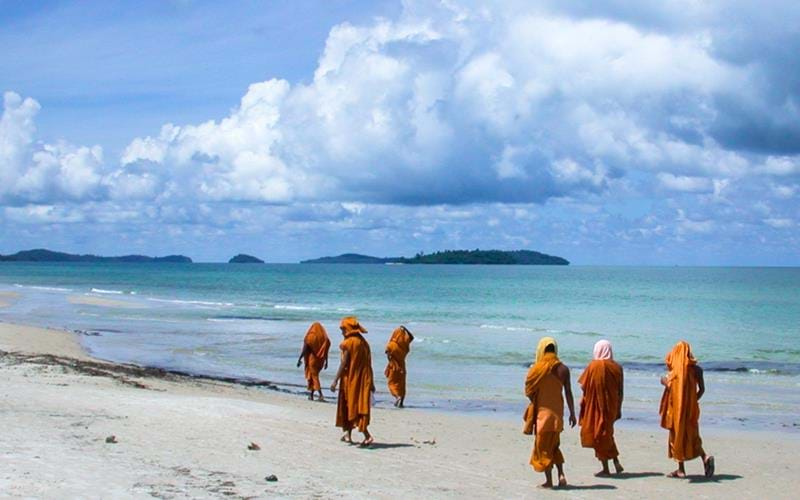
With guidance from an American NGO, locals from the village of Chi Pat have opened up a network of trails that allow visitors to experience the majestic landscape and forest of the Cardamom Mountains. Treks of varying lengths string together remote villages, bat caves and enigmatic jar burial sites dating from the Khmer era. You can also embark on kayaking trips, join early morning birdwatching parties on misty rivers and swim in pools below thundering waterfalls on the Tatai River.
Accommodation Options
Koh Kong
Another day to relax at your floating lodge, or enjoy some of the many outdoor activities on offer, from forest walks to sunset cruises.
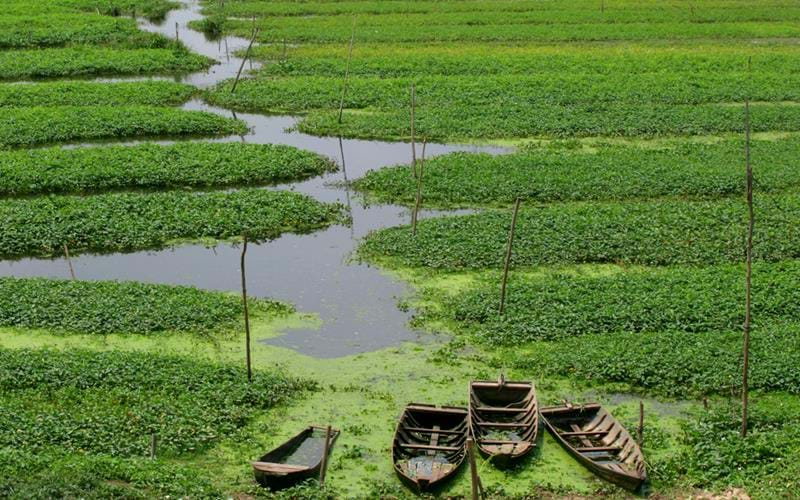
Head off on a dawn jungle trek or bird-watching walk in the morning, or a visit to the village on the opposite bank of the river for a taste of rural life in the coastal jungles of Cambodia. Another possible excursion takes you by boat to the spectacular Tatai Falls, via a stop at the fishing settlement of Koh Kong Khnong. The lodge also does a delightful sunset river cruise – great for experiencing the forest at twilight over a long drink with a loved one!
Accommodation Options
Kep
Drive to Kep in the morning for a four-night stay at dreamy Knai Bang Chatt, one of our favourite boutique hotels in Southeast Asia.
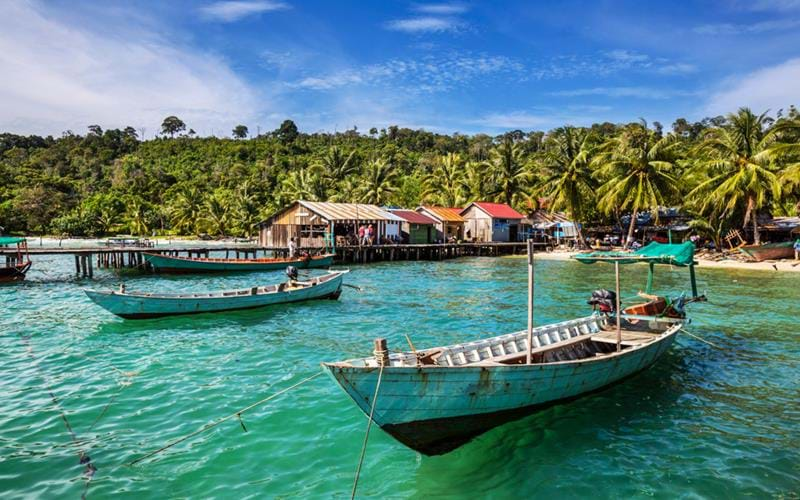
By far the loveliest coastal retreat in Cambodia is Kep, a town originally founded by the French in 1906, and which has since become popular among wealthy city dwellers, who travel here on weekends in search of the famous local peppered crab. There’s no beach to speak of, but visitors may catch an excursion boat out to nearby Rabbit Island, whose palm-fringed shoreline is scalloped by coves of white sand and turquoise water. Guided trips to hidden cave shrines and rock formations in the dramatic karst hills nearby are options should you wish to extend your stay.
Accommodation Options
Kep
Visit the charming riverside town of Kampot today.
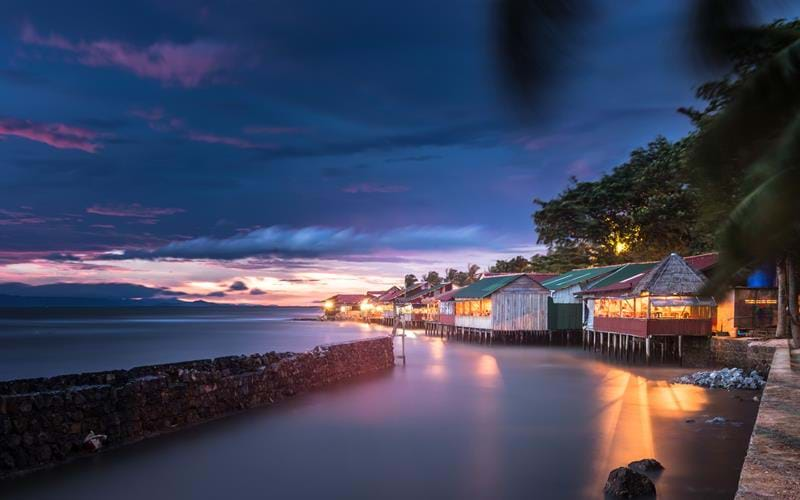
With its dilapidated colonial-era buildings, rows of Chinese-style shophouses and wide, dusty streets, Kampot exists in an appealing time-warp where the pace of life hasn’t picked up since the French left. The riverside location at the foot of the Elephant Mountains adds to its charm. You can kayak, standup paddle board or rent a cycle for a peddle through the sleepy streets. There are also some great cafés to lounge in.
Kampot's pepper is widely regarded as some of the best, and the plantations can be seen around the town. It is possible to visit them to find out more about the growing and processing of the spice and photographers will also want to pay a visit to the salt pans on the outskirts of the town.
Accommodation Options
Kep
Spend your penultimate day on the coast exploring the beaches, islands and karst caves in the area.
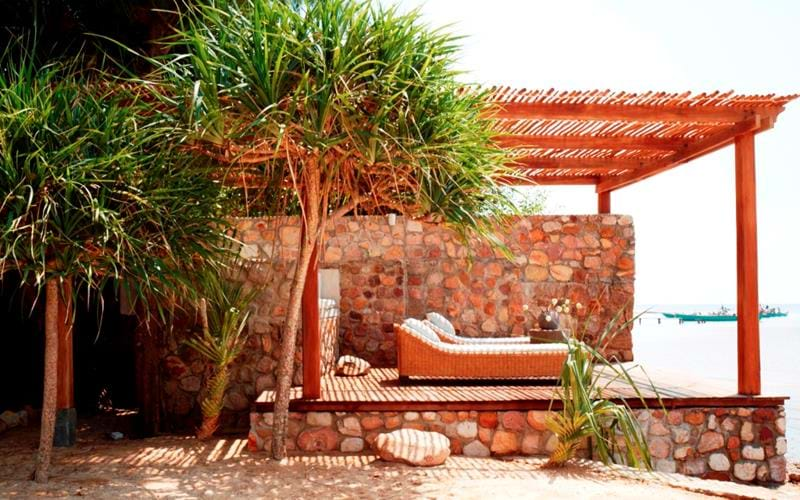
Should sprawling on a driftwood daybed by the hotel’s infinity pool lose its appeal, go for one of optional activities on offer: a fishing trip with a local, a motorcycle tour around the area visiting caves; or trip out to the lovely beaches of Koh Tonsay, an island just off the coast.
Accommodation Options
Kep
Make the most of the tropical sunshine and dreamy gardens of the hotel, perhaps heading for a sundowner at the Sailing Club next door, a traditional stilted wooden building overlooking the water.
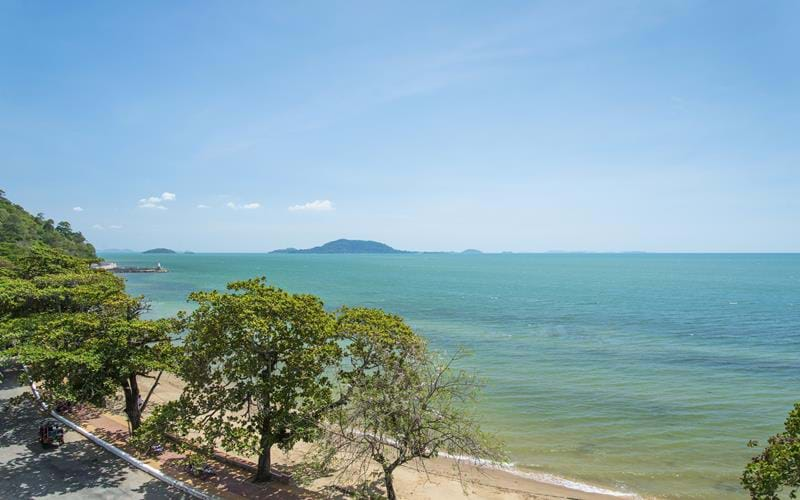
There are a handful of pleasant restaurants in Kep village. ‘Pepper crab’ is the local delicacy, along with choice cuts of swordfish and snapper. Further afield, Kampot has a better choice of restaurants and more arty cafés.
Accommodation Options
Kep–UK
Check out mid-morning for your return journey by car to Phnom Penh airport, where you’ll catch an evening flight back to the UK
Accommodation Options
UK
Morning arrival in the UK
Accommodation Options
Tailor-made Tour 16 days from £4670 per person
What's included
✓ International flights from the UK
✓ 14 nights accommodation
✓ All road travel and transfers by private chauffeur-driven vehicles
✓ English-speaking guides
✓ Breakfast daily
✓ Entrance fees to sites and monuments listed in tour itinerary
Places and Experiences in this tour
Plan your Next Adventure
With the Summer almost upon us, now is the time to begin planning your next summer adventures in Asia. Our Travel Specialists are ready to take your call and discuss the adventure you have been dreaming of.
Or call us on 0208 566 3739


